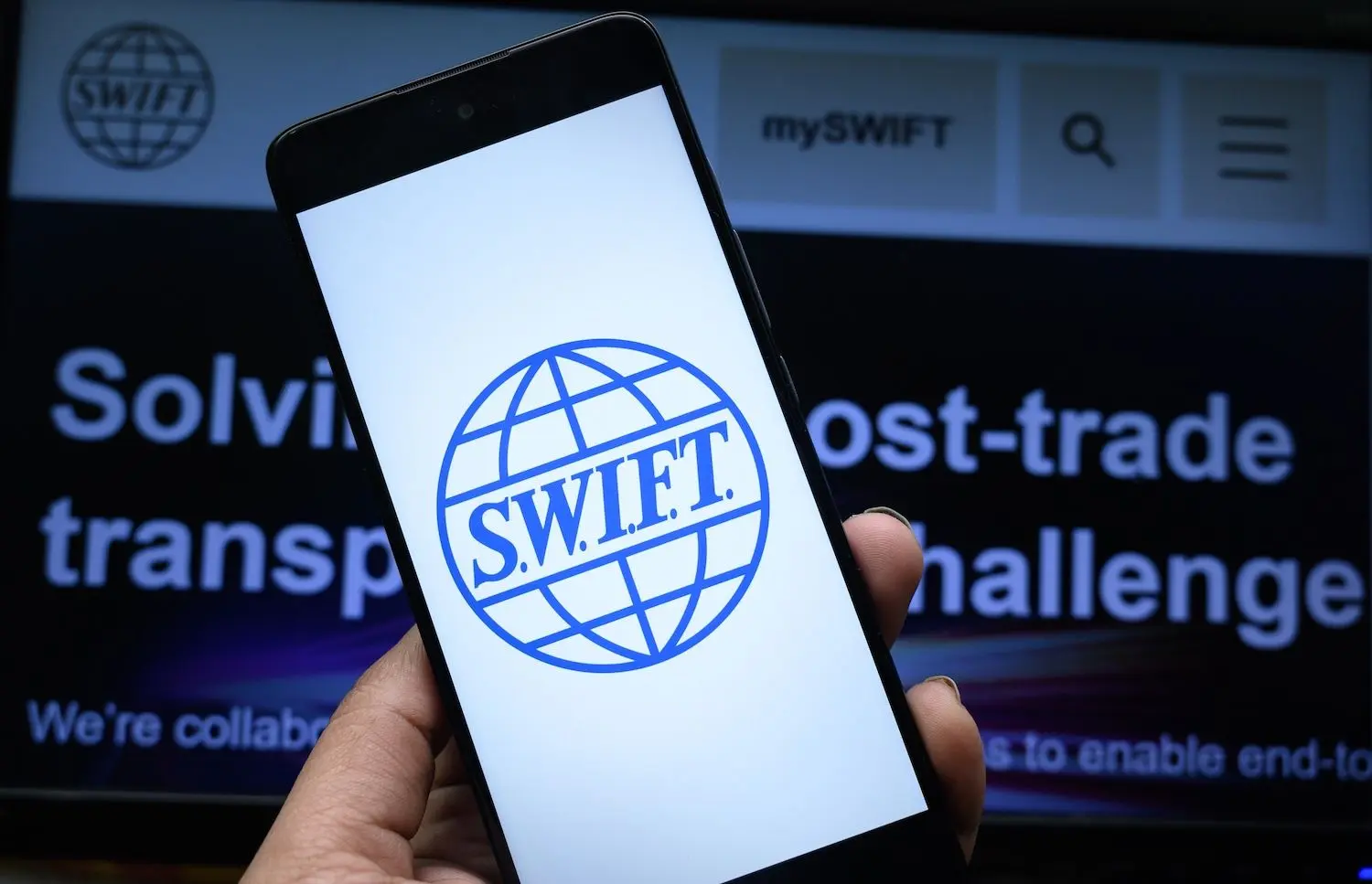Swift announced Monday it will deploy a blockchain-based transaction ledger with more than 30 global banks and blockchain firm ConsenSys, marking the payments cooperative's most direct challenge yet to the $300 billion stablecoin market. The system will enable round-the-clock cross-border settlements using automated smart contracts, a shift from Swift's decades-old messaging infrastructure that currently processes instructions rather than executing transfers.
What to Know:
- Swift's blockchain ledger will record and validate transactions using ISO 20022 compliance standards, running parallel to existing payment rails as banks choose between traditional and tokenized systems.
- ConsenSys will develop the prototype on Linea, an Ethereum layer-2 network that uses zero-knowledge cryptography to batch transactions for enhanced speed and privacy.
- European banks plan to launch a euro-denominated stablecoin by 2026, intensifying pressure on legacy payment networks to modernize or risk losing market share to decentralized alternatives.
Technical Framework Targets Regulatory Compliance
The shared ledger will sequence transactions and embed compliance data through ISO 20022, the global messaging standard Swift adopted for cross-border payments. Swift designed the architecture to combine blockchain programmability with the transparency requirements regulators impose on financial institutions. The approach differs from stablecoins, which allow peer-to-peer transfers without intermediary oversight.
ConsenSys will construct the initial version using Linea, its Ethereum-compatible network that compresses multiple transactions into single batches through zero-knowledge proofs.
Swift and participating banks previously tested blockchain messaging on Linea to assess whether distributed ledger settlement could meet regulatory thresholds. Those trials examined how smart contracts might automate compliance checks that currently require manual review.
The initiative runs alongside Swift's modernization of traditional fiat payment channels. Banks will maintain access to both systems as the organization tests which transaction types suit blockchain rails. Swift executives said the dual-track strategy gives institutions time to evaluate operational risks before committing fully to tokenized infrastructure.
Banks Weigh Costs Against Stablecoin Competition
Stablecoins, predominantly dollar-pegged tokens issued by private companies, have captured significant transaction volume by enabling instant settlement without banking intermediaries. The market reached $300 billion in total value, drawing regulatory scrutiny in the United States and Europe. European banking groups responded by outlining plans for a euro stablecoin launch by 2026, a timeline that coincides with new European Union rules for digital asset oversight.
"We're beyond experiments now. The question is how to scale—regardless of whether the instrument is a tokenized deposit, a CBDC, a stablecoin, or a tokenized fund.
It comes down to what exactly we're connecting and where the value shows up," Tom Zschach, a Swift executive, said in remarks accompanying the announcement.
Separately, blockchain infrastructure provider Chainlink disclosed its collaboration with Swift on pilots involving UBS and Euroclear that demonstrated tokenized fund subscriptions. While those projects operate independently from the shared ledger, they indicate Swift's broader effort to link public and private blockchain networks through standardized protocols. The pilots tested whether institutional investors could subscribe to tokenized assets using existing Swift connectivity.
Legal and Operational Hurdles Remain
Supporters of the ledger project argue it will reduce reconciliation expenses, improve audit trails, and enable programmable settlements that execute when preset conditions are met.
Critics counter that banks must absorb integration costs, manage new operational vulnerabilities, and secure legal finality—the judicial recognition that a blockchain transaction cannot be reversed. Swift executives acknowledged these challenges but said widespread adoption depends on reconciling blockchain transaction confirmations with established legal frameworks.
Financial institutions also face questions about liability when smart contracts malfunction or when disputes arise over automated settlements.
Traditional payment systems provide clear legal recourse through established court precedents. Blockchain-based systems lack equivalent judicial history, creating uncertainty about how disputes will be resolved.
Swift plans staged rollouts with banking partners to identify which currencies and payment corridors should be prioritized. The organization has not disclosed a timeline for full deployment or specified which jurisdictions will participate in initial phases. Success will hinge on whether the ledger can match stablecoin speed and cost advantages while maintaining the regulatory compliance and legal protections banks require.
Understanding Key Terms
Smart contracts are self-executing programs stored on blockchains that automatically enforce agreement terms when conditions are met, eliminating manual oversight. ISO 20022 is the international standard for financial messaging that uses structured data formats, allowing different payment systems to exchange information consistently. Zero-knowledge cryptography enables one party to prove information validity without revealing the underlying data, a technique used to compress transaction batches while preserving privacy. Layer-2 networks are blockchain protocols built atop primary chains like Ethereum, designed to process transactions faster and cheaper by handling most activity off the main network. Central bank digital currencies, or CBDCs, are government-issued digital money that operates on blockchain infrastructure while maintaining central bank control, distinct from privately issued stablecoins.
Closing Thoughts
Swift's blockchain ledger represents a defensive move against stablecoins that have eroded traditional banking's transaction dominance. The project's viability depends on whether Swift can deliver comparable speed and cost savings while satisfying regulatory demands banks cannot ignore. If successful, the system could redefine global settlement by embedding compliance into digital infrastructure, though legal and technical obstacles may delay widespread adoption.

